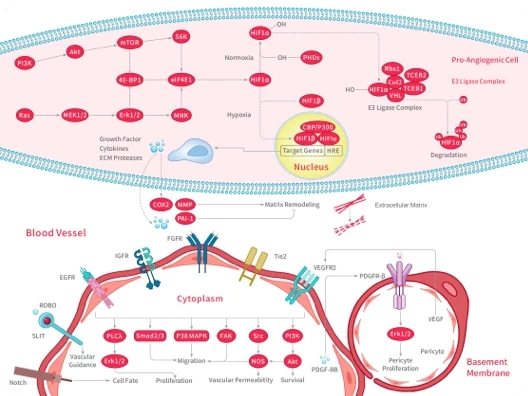- Remove All
 Your shopping cart is currently empty
Your shopping cart is currently empty
Dose conversion
Safe and effective drug dosing is necessary, regardless of its purpose of administration. Allometric scaling is an empirical approach where the exchange of drug dose is based on normalization of dose to body surface area. This approach assumes that there are some unique characteristics on anatomical, physiological, and biochemical process among species, and the possible difference in pharmacokinetics/physiological time is accounted by allometric scaling. This method is frequently used in research for experimental purpose to predict an approximate dose on the basis of data existing in other species. The US Food and Drug Administration's current guidance is based on dose by factor approach where the NOAEL of drug is scaled by making use of allometry to derive the maximum recommended starting dose (MRSD) for clinical studies.
Usually the correction factor (Km) is used to estimate the animal equivalent dose (AED) for different animal species. Km is estimated by dividing the average body weight (kg) of species to its body surface area (m2). For example, the average human body weight is 60 kg, and the body surface area is 1.62 m2. Therefore, the Km factor for human is calculated by dividing 60 by 1.62, which is 37. As the Km factor for each species is constant,the Km ratio is used to simplify calculations. AED can be estimated as: AED1 (mg/kg) = AED2 (mg/kg) × Km ratio (Km2/Km1) Eq.1; or AED1 (mg/kg) = AED2 (mg/kg) × Weight2 (kg) × BSA ratio (BSA1/BSA2) Eq.2.
| Species | Reference body weight (kg) | To convert dose in mg/kg to dose in mg/m2, divide by km | To convert human dose in mg/kg to AED in mg/kg, either | ||
| Multiply human dose by | Divide human dose by | ||||
| Mouse | 0.02 | 3 | 12.3 | 0.081 | |
| Hamster | 0.08 | 5 | 7.4 | 0.135 | |
| Rat | 0.15 | 6 | 6.2 | 0.162 | |
| Ferret | 0.3 | 7 | 5.3 | 0.189 | |
| Guinea Pig | 0.4 | 8 | 4.6 | 0.216 | |
| Rabbit | 1.8 | 12 | 3.1 | 0.324 | |
| Cat | 2 | 11.7 | 3.2 | 0.316 | |
| Monkey | 3 | 12 | 3.1 | 0.324 | |
| Dog | 10 | 20 | 1.9 | 0.541 | |
| Marmoset | 0.35 | 6 | 6.2 | 0.162 | |
| Squireel Monkey | 0.6 | 7 | 5.3 | 0.189 | |
| Baboon | 12 | 20 | 1.9 | 0.541 | |
| Micro pig | 12 | 27 | 1.4 | 0.73 | |
| Mini pig | 40 | 35 | 1.1 | 0.946 | |
Table 1. Animal equivalent dose calculation based on Km ratio.
| AB | Mouse (20g) | Hamster (80g) | Rat (150g) | Ferret (300g) | Guinea Pig (400g) | Rabbit (1.8kg) | Cat (2.0kg) | Monkey (3.0kg) | Dog (10kg) |
| Mouse (20g) | 1.00 | 1.67 | 2.0 | 2.3 | 2.7 | 4.0 | 3.9 | 4.0 | 6.7 |
| Hamster (80g) | 0.60 | 1.00 | 1.20 | 1.40 | 1.60 | 2.4 | 2.3 | 2.4 | 4.0 |
| Rat (150g) | 0.50 | 0.83 | 1.00 | 1.17 | 1.33 | 2.0 | 1.95 | 2.0 | 3.3 |
| Ferret (300g) | 0.429 | 0.71 | 0.86 | 1.00 | 1.14 | 1.71 | 1.67 | 1.71 | 2.9 |
| Guinea Pig (400g) | 0.375 | 0.63 | 0.75 | 0.88 | 1.00 | 1.50 | 1.46 | 1.50 | 2.5 |
| Rabbit (1.8kg) | 0.250 | 0.417 | 0.50 | 0.58 | 0.67 | 1.00 | 0.98 | 1.00 | 1.67 |
| Cat (2.0kg) | 0.256 | 0.427 | 0.51 | 0.60 | 0.68 | 1.03 | 1.00 | 1.03 | 1.71 |
| Monkey (3.0kg) | 0.250 | 0.417 | 0.50 | 0.58 | 0.67 | 1.00 | 0.98 | 1.00 | 1.67 |
| Dog (10kg) | 0.150 | 0.250 | 0.300 | 0.350 | 0.400 | 0.60 | 0.59 | 0.60 | 1.00 |
Note
- The Km ratio values provided in Table 1 is easily obtained by dividing one animal species Km factor by another animal species Km factor or vice versa. The correction factor (Km) is estimated by dividing the average body weight (kg) of species to its body surface area (m2).
- However, it must be borne in mind that the km factor varies across animal species and increases proportional to W2/3 within a species as body weight increases. For example, the km value in ratsvaries from 5.2 (100 g rat), 6 (150 g rat), and 7 (250 g rat).
- Although Table 1. indicates the dose conversion of the drug injection between human and animals, allproducts offered by our company could only be used for researches on cells or experimental animals. They are strictly prohibited to be used on any human, and usage as veterinary drug or pesticide isalso not allowed.
- The animal equivalent dose (AED) can be calculated on the basis of body surface area ratio (BSA ratio) provided in the Table 2 (Eq.2).
Table 2. Animal equivalent dose calculation based on BSA ratio.
| AB | Mouse (20g) | Rat (200g) | Guinea Pig (400g) | Rabbit (1.5kg) | Cat (2.0kg) | Monkey (4.0kg) | Dog (12kg) |
| Mouse (20g) | 1.00 | 7.0 | 12.3 | 27.8 | 29.7 | 64.1 | 124.2 |
| Rat (200g) | 0.143 | 1.00 | 1.75 | 4.0 | 4.2 | 9.2 | 17.7 |
| Guinea Pig (400g) | 0.082 | 0.57 | 1.00 | 2.3 | 2.4 | 5.2 | 10.1 |
| Rabbit (1.5kg) | 0.036 | 0.252 | 0.441 | 1.00 | 1.07 | 2.3 | 4.5 |
| Cat (2.0kg) | 0.034 | 0.236 | 0.412 | 0.94 | 1.00 | 2.2 | 4.2 |
| Monkey (4.0kg) | 0.016 | 0.109 | 0.191 | 0.434 | 0.463 | 1.00 | 1.94 |
| Dog (12kg) | 0.008 | 0.056 | 0.099 | 0.224 | 0.239 | 0.52 | 1.00 |
Note
- The BSA ratio values provided in Table 2 is easily obtained by dividing one animal BSA by another animal BSA or vice versa. Body surface areas are calculated by Meeh's formula: BSA = k(W)2/3 and they are proportionate to the two-thirds power of their weight.
Where: K = 9.0 for mice; K = 10.4 for cats; K = 10.1 for dogs; K = 10.5 for guinea pigs; K = 12.0-12.9 for rabbits; K = 9.0 for laboratory rats; K = 11.8 for monkeys; K = 10.6 for adults(human).
References
- Nair AB, Jacob S. A simple practice guide for dose conversion between animals and human. J Basic Clin Pharm. 2016;7(2):27-31. doi:10.4103/0976-0105.177703
- Price GS and Frazier DL. Use of Body Surface Area (BSA)-Based Dosages to Calculate Chemotherapeutic Drug Dose in Dogs: I. Potential Problems with Current BSA Formulae. J Vet Intern Med. 1998;12:267-271.
- Wynn SG, Fougere B. Chapter 14: Herb manufacture, Pharmacy, and Dosing. In: Wynn SG, Fougere B, eds. Veterinary Herbal Medicine. St. Louis, MO: Elsevier; 2007: 233-235.
- 4.Chappell WR, Mordenti J. Extrapolation of toxicological and pharmacological data from animals to humans. In: Testa B, eds. Advances in drug research Volume 20. San Diego, CA: Academic Press; 1991: 15-26.

Copyright © 2015-2025 TargetMol Chemicals Inc. All Rights Reserved.











